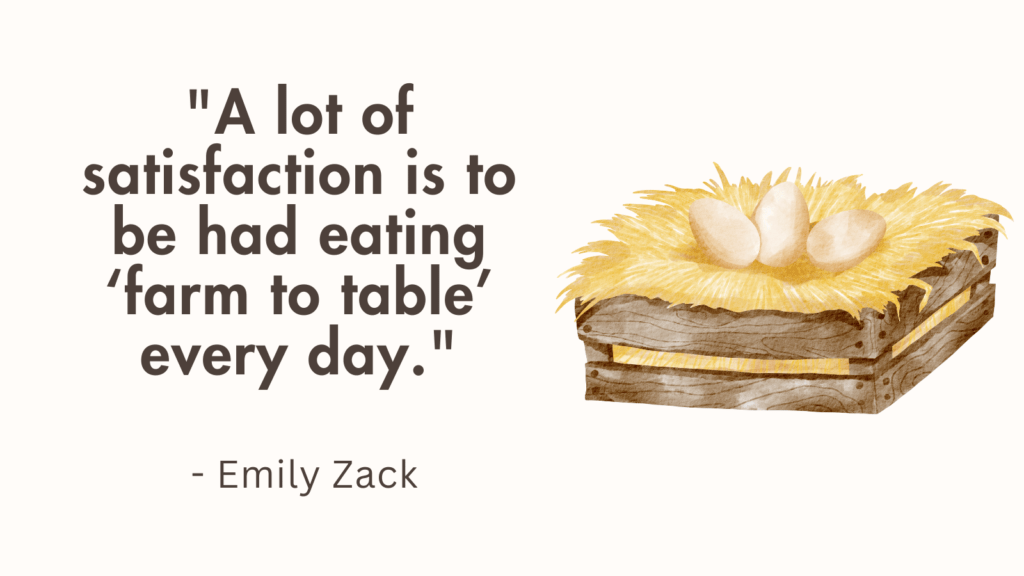In this post, you’re going to learn all about prairie bluebell eggers.
What Are Prairie Bluebell Eggers?
The “Prairie Bluebell Egger” is a specific hybrid breed of chicken known for its unique egg-laying abilities.
This breed is a cross between a blue egg-laying breed, such as the Ameraucana or Easter Egger, and a brown egg-laying breed like the Rhode Island Red or Marans.
The purpose of breeding Prairie Bluebell Eggers is to produce chickens that lay blue or green eggs consistently while maintaining good egg production and other desirable traits like docile temperaments and hardiness.
These chickens are popular among backyard poultry enthusiasts and hobby farmers who enjoy colorful egg baskets.
How to Raise Prairie Bluebell Eggers?
Raising Prairie Bluebell Eggers can be a rewarding experience for poultry enthusiasts and hobby farmers.
To successfully raise Prairie Bluebell Eggers, it’s important to consider various aspects such as housing, feeding, healthcare, and general well-being.
Let’s dive into the details on how to raise these beautiful chickens.
1. Housing
Providing a suitable and secure housing environment is essential for the well-being of your Prairie Bluebell Eggers.
Here are some key points to consider:
Coop Size: Plan for a coop with at least 4 square feet per bird, allowing ample space for roosts, nest boxes, and general movement.
Ventilation: Good airflow within the coop is crucial to prevent moisture buildup and maintain air quality. Install windows, vents, or fans to ensure proper ventilation.
Nest Boxes: Provide comfortable and private nest boxes for your hens to lay their eggs. Aim for one nest box per 3-4 hens, using soft bedding material like straw or wood shavings.
Roosting Bars: Offer sturdy and elevated roosting bars for your chickens to perch on while sleeping. Allow at least 8-10 inches of roosting space per bird.
Security: Predators like raccoons, foxes, and rats may pose a threat to your chickens. Ensure your coop has secure fencing, predator-proof locks, and hardware cloth to keep predators out.
Outdoor Access: If possible, provide a safe outdoor area or run where your Prairie Bluebell Eggers can enjoy sunshine, peck at grass, and dust bathe. This helps to satisfy their natural instincts.
Related: How to Care for Mohawk Chicken’s Crest?
2. Feeding
A balanced diet is critical for the health and productivity of your Prairie Bluebell Eggers. Consider the following guidelines:
a. Commercial Feed: Provide a high-quality layer feed formulated specifically for laying hens. Look for feeds with around 16-18% protein content and essential nutrients like calcium, vitamins, and minerals. Follow the manufacturer’s recommendations for feeding amounts.
b. Fresh Water: Ensure a constant supply of clean and fresh water. Chickens can consume a surprising amount of water, especially in hot weather, so check water sources regularly.
c. Treats: Offer occasional treats like fruits, vegetables, and grains as a supplement to their regular feed. Popular options include leafy greens, carrot tops, berries, and small quantities of whole grains. Avoid sugary or fatty treats and limit treats to avoid disrupting the nutritional balance.
3. Healthcare
Maintaining the health of your Prairie Bluebell Eggers is crucial for their overall well-being. Here are some essential healthcare practices:
a. Vaccination: Consult with a local veterinarian or poultry expert to determine if any vaccinations are necessary based on the prevalent diseases in your area.
b. Parasite Control: Regularly inspect your flock for signs of external parasites such as mites or lice. Utilize appropriate treatments approved for poultry if an infestation is detected.
c. Biosecurity Measures: Implement biosecurity practices to prevent the introduction and spread of diseases. This includes limiting visitor access to your flock, proper hygiene practices when handling birds, and disinfecting equipment and areas as needed.
d. Regular Health Checks: Observe your chickens regularly for signs of illness or distress. Look out for changes in behavior, appetite, or egg production. If you notice any concerns, consult a poultry veterinarian for diagnosis and treatment.
Related: How To Keep Chickens Out Of Garden?
4. General Well-being
To ensure the emotional well-being of your Prairie Bluebell Eggers, consider the following:
a. Enrichment: Provide environmental enrichment to keep your chickens stimulated and prevent boredom. This can include scattering treats for them to seek out, providing perches or platforms for climbing, or hanging toys or cabbage heads for them to peck at.
b. Social Interaction: Chickens are social animals and benefit from interaction with their flockmates. Ensure they have sufficient companionship by keeping them in groups of at least three or more.
c. Dust Bathing: Chickens naturally engage in dust bathing to keep their feathers clean and control mites or lice. Provide a sandy area with loose soil or sand where they can indulge in this behavior.
d. Egg Collection: Collect eggs regularly to prevent them from accumulating in the nest boxes. Leaving eggs uncollected for too long can encourage broodiness or attract pests.
Conclusion
Raising Prairie Bluebell Eggers involves providing suitable housing, a balanced diet, regular healthcare, and meeting their social and environmental needs.
By following these guidelines, you can enjoy the beauty of their colorful eggs, their docile nature, and their overall well-being.
Related: Will Chickens Stop Laying If Coop Is Dirty? [Raising Chickens Complete Guide]
FAQ
What makes Prairie Bluebell Eggers different from other chicken breeds?
Prairie Bluebell Eggers are a hybrid breed known for their ability to lay beautiful blue or green eggs.
They are a mix of various chicken breeds, including Ameraucanas and Marans, which contribute to their unique egg color.
Additionally, they are known for their friendly and docile temperament.
How many eggs can I expect from Prairie Bluebell Eggers?
On average, Prairie Bluebell Eggers can lay around 200-280 eggs per year, depending on various factors such as genetics, diet, and environmental conditions.
It’s important to note that egg production may vary between individual hens.
Do Prairie Bluebell Eggers require special care or management?
Prairie Bluebell Eggers do not require any specific care beyond what is typical for chickens.
Providing them with a suitable housing environment, a balanced diet, access to clean water, regular health checks, and general well-being practices will keep them happy and healthy.
Related: Can Goats Eat Watermelon?
Are Prairie Bluebell Eggers cold-hardy?
Yes, Prairie Bluebell Eggers have good cold-hardiness.
Their genetics include breeds like Marans, which are known for their ability to withstand colder climates.
However, it’s still important to ensure they have proper shelter, insulation, and protection from extreme weather conditions.
Can Prairie Bluebell Eggers free-range or do they need a confined area?
Prairie Bluebell Eggers can do well in both free-range and confined environments, as long as their basic needs are met.
If you choose to let them free-range, make sure the area is predator-proof and they have access to secure shelter for roosting and nesting.
Confined areas, such as a spacious chicken run, can also provide a safe and controlled space for them to roam.
Related: How To Start Farming With No Money?
Are Prairie Bluebell Eggers good with children and other pets?
Prairie Bluebell Eggers are known for their friendly and docile nature, making them generally good with children and other pets when properly introduced and supervised.
However, it’s essential to teach children how to handle chickens gently and ensure that other pets do not pose a threat to the birds.

Garden Cart
*As an Amazon Associate I earn from qualifying purchases, at zero cost to you, if you click through the link and finalize a purchase.





